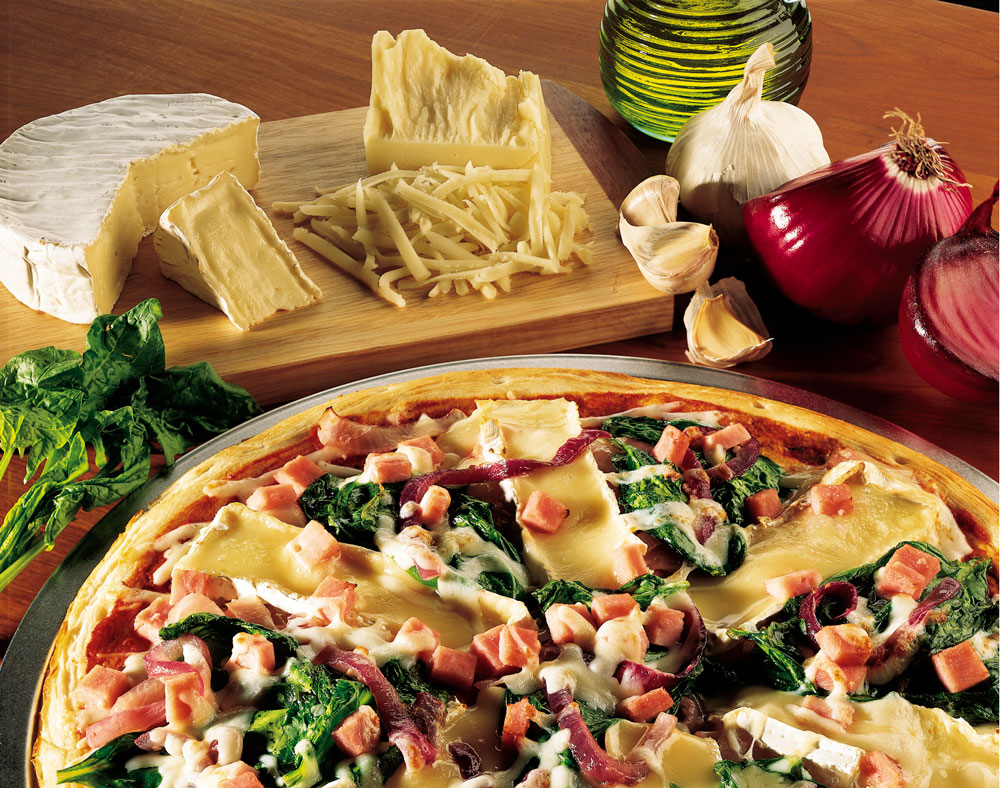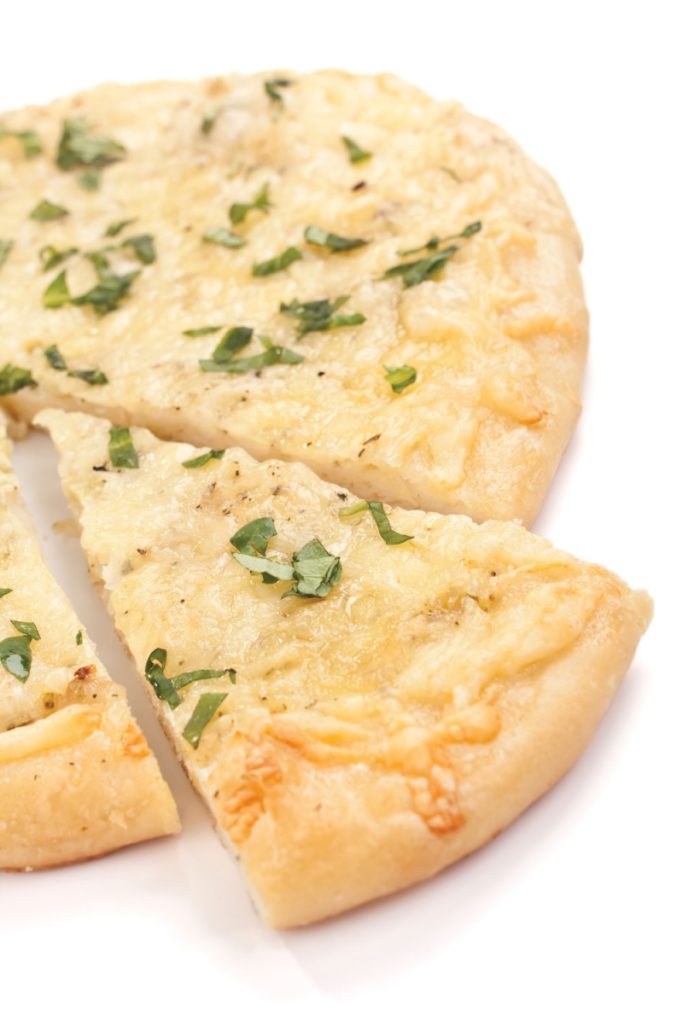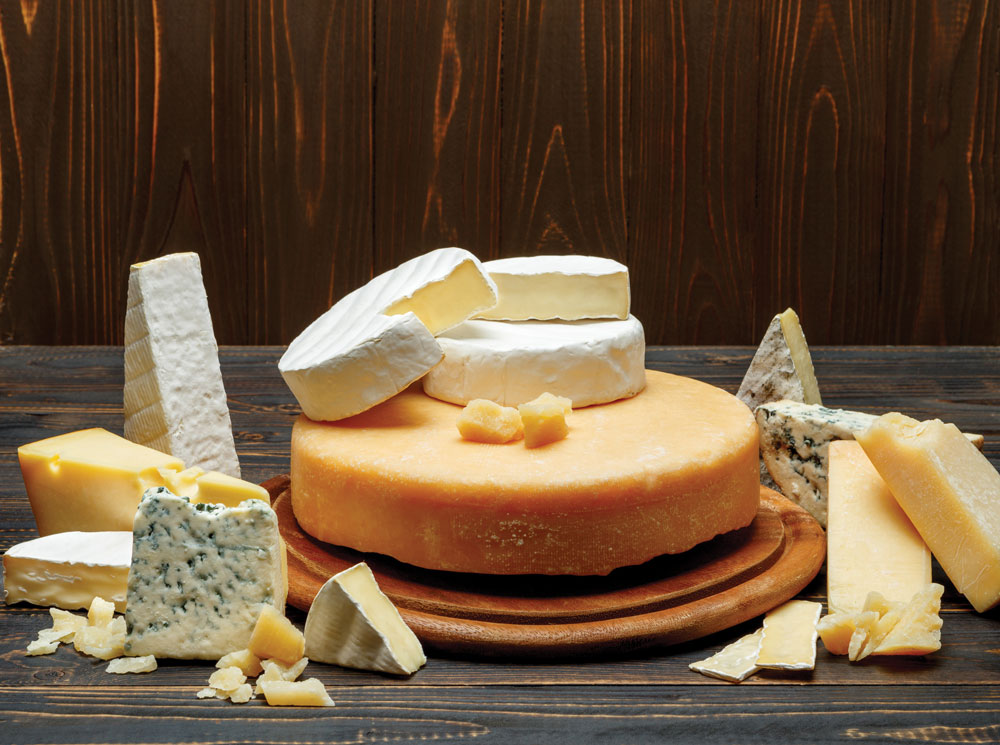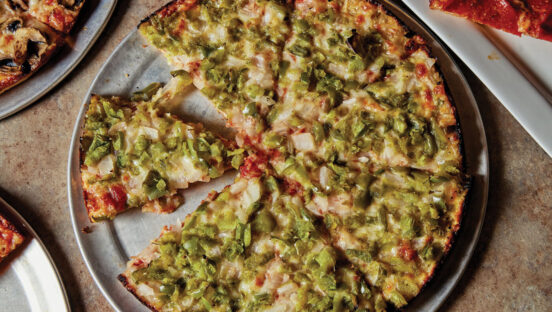It’s no surprise to learn that Americans regularly rank their favorite cheeses as mozzarella, Parmesan and cheddar. These are the most popular types of cheese found on pizza, and they’re even better when you blend them together. But the beauty of mozzarella is that it goes well with so many other types of cheeses, too, from Swiss, Monterey Jack and provolone to Brie, Gouda, feta and Gruyère.
Mark “The Cheese Dude” Todd, culinary consultant for the California Milk Advisory Board in Tracy, California, is a big believer in blending cheeses. Hitting upon the right combination of cheeses is one of the best ways you can make your pizzeria stand out, he says.
Watch a video featuring Mark “The Cheese Dude” Todd talking about cheese blends at PMQ.com/0618C

Brie, Ham and Spinach Pizza |
Recipe and image courtesy of the Wisconsin Milk Marketing Board
Ingredients:12” pizza crust Directions:Heat oven to 475º. Toss red onion and garlic with 1 tsp. olive oil in an ovenproof dish; roast until soft, about 5 minutes. Cool. Place the pizza crust on a pizza pan or large baking sheet. Spread the sauce on the pizza crust. Sprinkle mozzarella over the sauce. Arrange the ham on top of the mozzarella. Sprinkle the red onion mixture over the ham. Arrange the Brie on top and sprinkle with cumin. Toss the spinach with the remaining 1 tsp. of olive oil to coat lightly; arrange on top of the pizza. Bake for 8 to 10 minutes or until the crust is lightly browned. BONUS RECIPE: Find a recipe for Three Cheese Macaroni Pizza from the Wisconsin Milk Marketing Board in PMQ’s online recipe bank here: pmq.com/Recipe-Bank/Three-Cheese-Macaroni-Pizza. |
“Every cheese blend usually starts with part-skim mozzarella, or ‘pizza cheese,’ as its primary component,” Todd says. The standard blending ratios are 80/10/10 or 80/20, with the typical additions being cheddar, provolone, whole-milk mozzarella and Monterey Jack, he notes. “If you want to set yourself apart, use 80% part-skim mozzarella, 10% cheddar, and 10% of something with a lot of flavor, such as blue cheese, smoked mozzarella or pepper Jack,” he advises. “Even if you get a base blend from your distributor, you can still add your own special cheese to maximize the flavor.”
And, considering that there are about 3,500 types of cheese in the United States, you’d be silly to stick with the same two or three all of the time.
Representatives from the Wisconsin Milk Marketing Board in Madison, Wisconsin, say they’re seeing unique cheese varieties and blends of Wisconsin specialty cheeses popping up on restaurant menus across the country. Wisconsin Swiss, burrata and Gouda are three of the fastest-growing cheeses currently being used on pizza, while standout combinations blend varieties such as Roth buttermilk blue cheese with Sartori Montamoré, or Marieke smoked Gouda with Clock Shadow Creamery ricotta.
Let’s look at a few ways you can blend cheeses on your specialty pizzas for creative flavor effects.
Mimic a cheese plate. Put the flavors of a fine-dining cheese plate atop a pizza by starting with your mozzarella base and adding Brie, walnuts, figs and a drizzle of honey. This combination is sure to make a statement, and salty-sweet flavor combos are always a winner.
Kick it up a notch. Consumers are getting more adventurous with the levels of spice they can handle, so test their taste buds with a spicy pepper Jack blend or a mix of mozzarella and habanero cheddar. Toppings can include additional peppers, spicy sausage, a cool drizzle of sour cream or a sprinkle of cotija.
Offer new appetizers. Who can say no to more cheese? Try a pizza fondue with mozzarella and cheddar served with dippable meatballs and bread bites, or whip up a shareable quesadilla with cheddar and Monterey Jack alongside housemade salsa. Arancini is another Italian favorite; it’s traditionally made with Parmesan and provolone but easily customizable with a cheese of the moment.
Send your taste buds on a trip. If there are cities that make you think of specific cheeses, turn them into a cheese blend for your pizza. Want customers to feel like they took a trip to St. Louis? Add Provel to your mozzarella. What about a tour of Philly? Pair sliced beefsteak with American and provolone cheeses. Mix some Fontina or Havarti with peanut sauce and top it with chicken, carrots and green onions for a pizza that evokes a voyage to Thailand.
Lighten up your dessert pizza. Spring is here, so introduce a delicate dessert pizza that features a light and fluffy cream cheese and ricotta base topped with a variety of local fruits and berries.
 |
White Pizza BasicsDo your customers love a pizza bianca? Here are some popular cheese combinations to consider: Mozzarella, Romano, Parmesan Fontina, Gruyère Mozzarella, Parmesan, Gorgonzola Goat cheese, Parmesan, mozzarella Mozzarella, Taleggio |
Tom “The Dough Doctor” Lehmann, a pizza industry consultant from Manhattan, Kansas, says he has found that Parmesan and Romano cheeses blend splendidly with mozzarella, “adding depth as well as intensity to the cheese flavor.” But Lehmann isn’t opposed to leaving mozzarella out of the mix entirely. “I’m not sure I would want to use mozzarella cheese as a blending cheese due to its mild flavor,” he says. “This is why cheddar or other types of cheese are commonly blended with mozzarella to improve the overall flavor and, to some extent, texture.”
He has never tried blending Parmesan, Romano and white cheddar, “but it might be worth a try,” he says. “A good way to see if you like the flavor is to make a pizza with your white cheddar and then sprinkle on an ounce or so of shredded Parmesan or half an ounce of grated Romano. By knowing how much cheddar you put on the pizza and how much Parmesan or Romano you put on, you will be able to calculate the blend needed to replicate the flavor. Be sure to experiment with different amounts of Parmesan and Romano or even blends of the two.”
Ultimately, there are so many varieties of cheese that it doesn’t make sense to not experiment. Ask for samples at a local cheese shop to test your own palate before trying them out on customers. You may surprise yourself and find a new favorite fromage!















